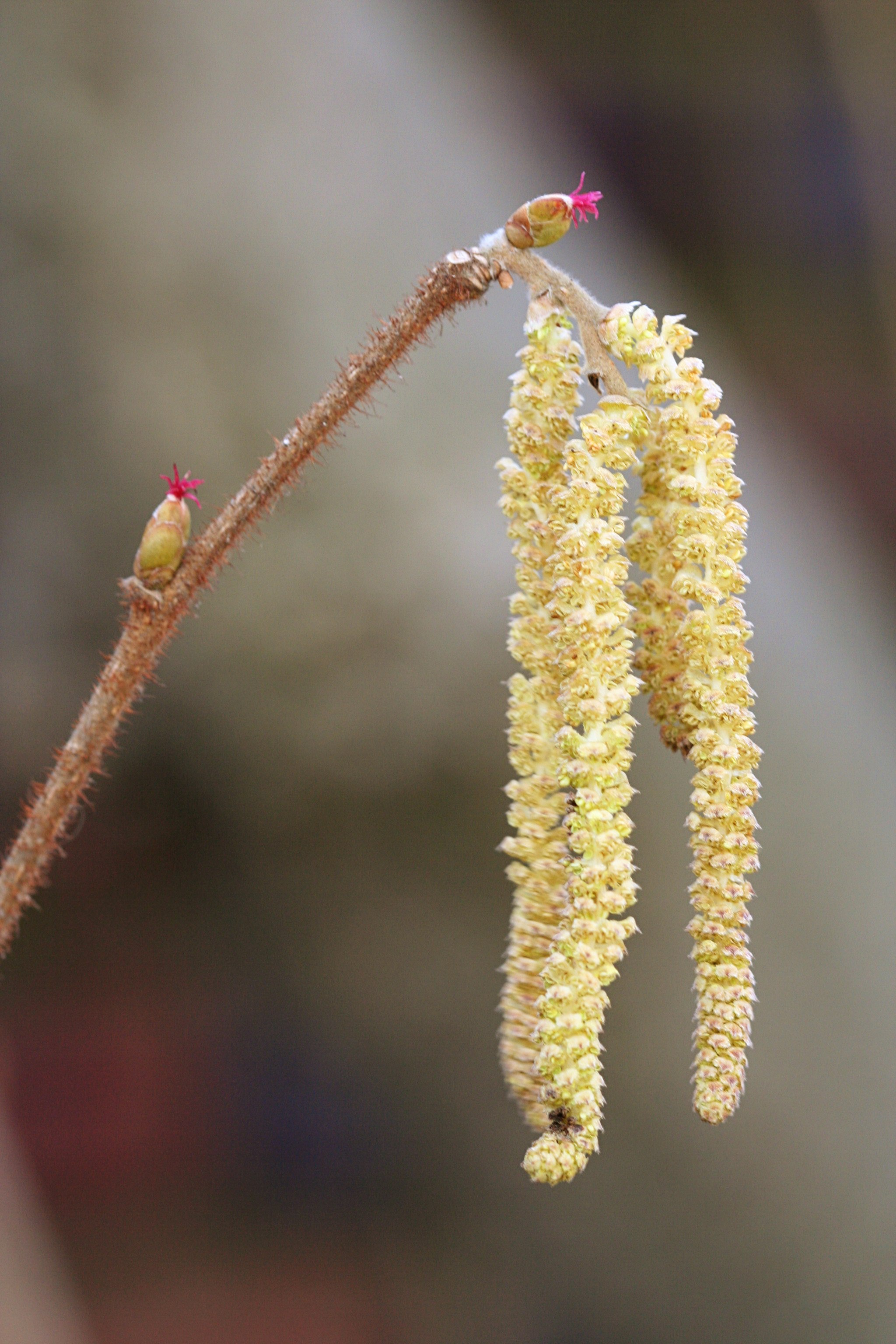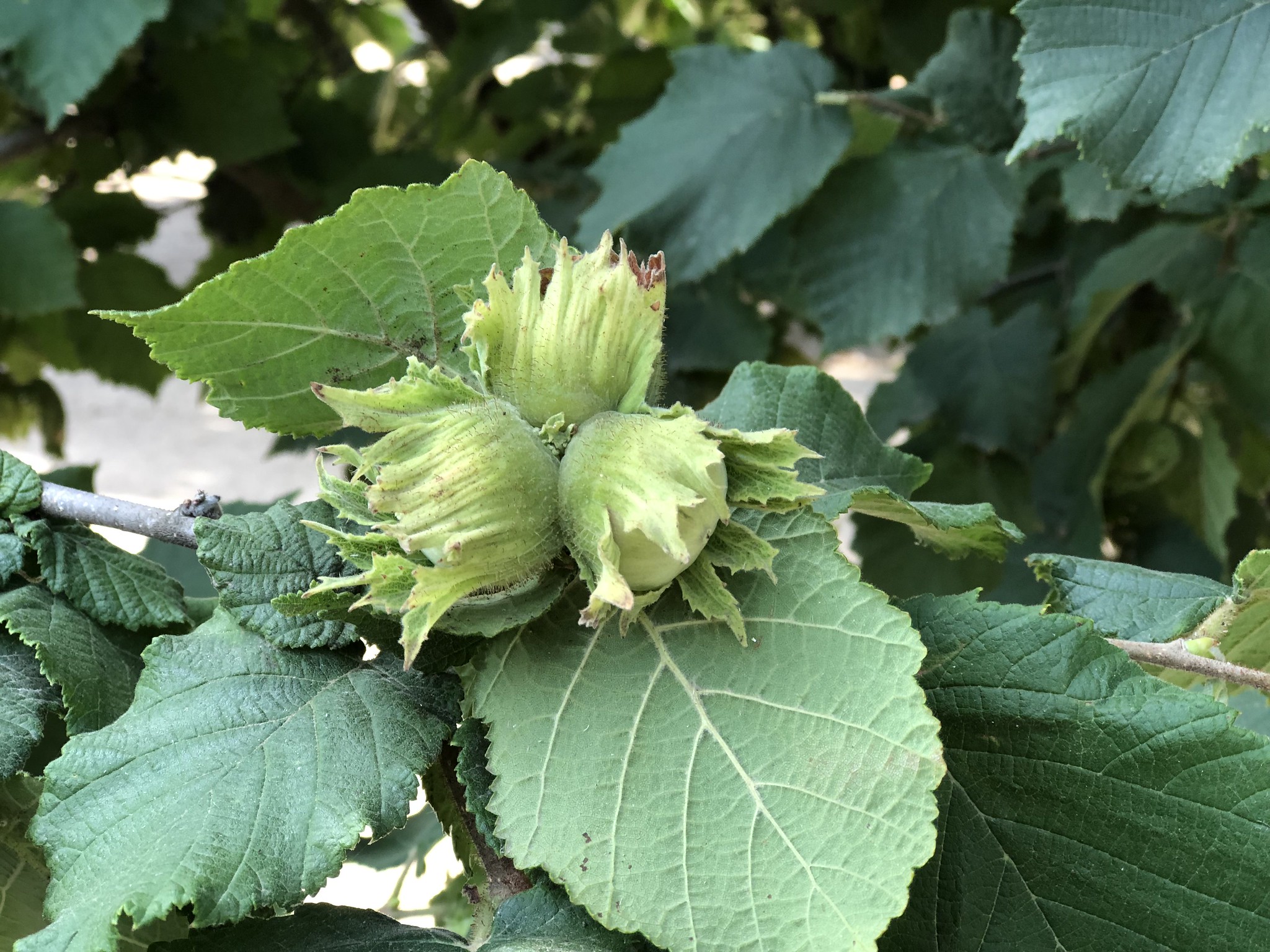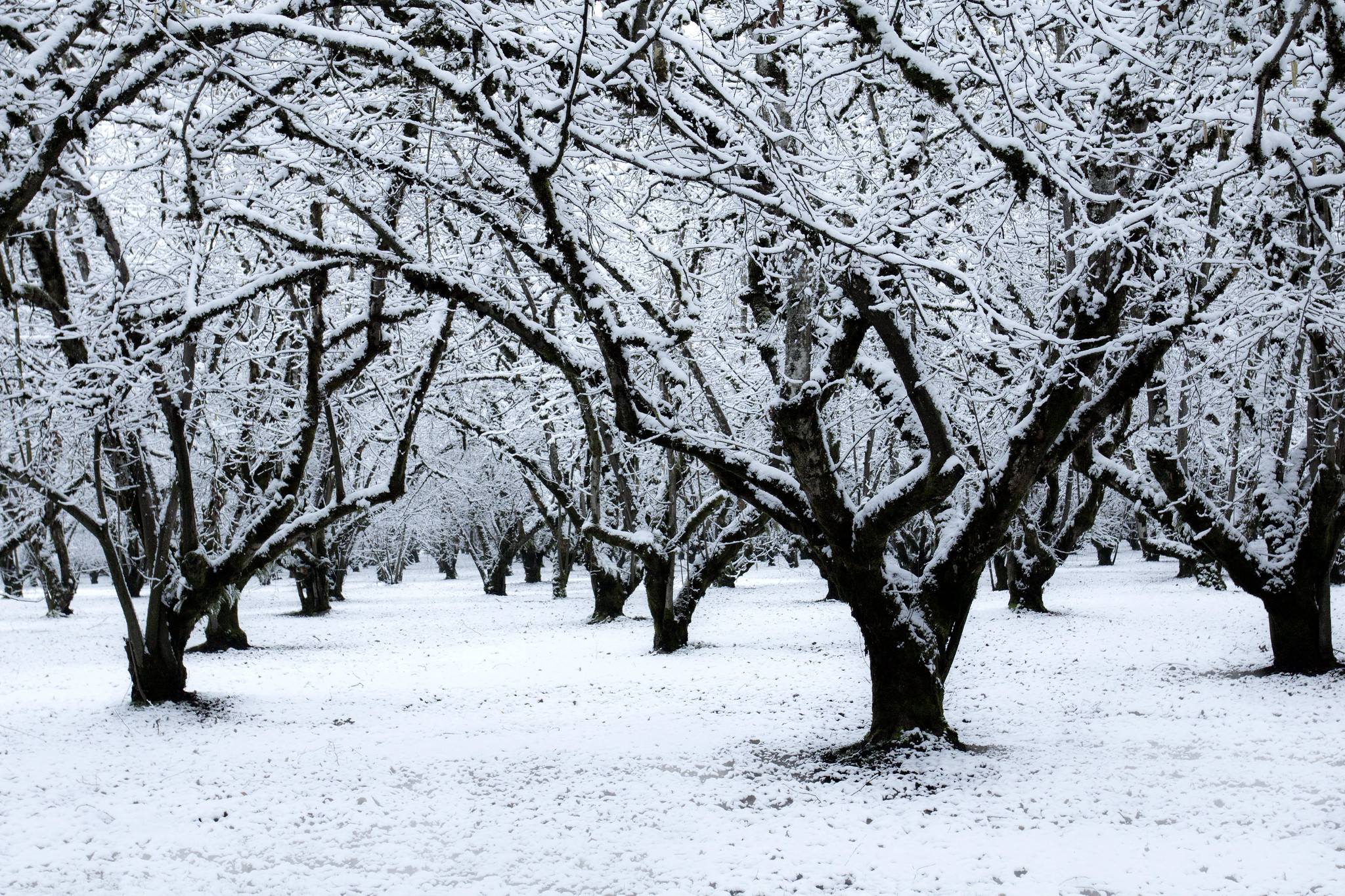Estimated reading time: 6 minutes

Hazelnuts are grown as a crop in Oregon and Washington and can be used for a range of food products, cooking oils, livestock feed, and even bioenergy. The European hazelnut (Corylus avellena) is the most commonly produced hazelnut in the U.S. The three native varieties of hazelnut in the U.S.—the California hazelnut (Corylus cornuta var. californica), the beaked hazelnut (Corylus cornuta) and the American hazelnut (Corylus americana)—are not normally grown as crops but can be hybridized with the European hazelnut to make a disease-resistant cultivar.
Hazelnut trees are resilient to drought. However, reliable hazelnut crops can only be produced under moderate climatic conditions, such as those found in Oregon’s Willamette Valley (which produces 99% of U.S. hazelnuts) and in western Washington. Beyond serving as a valuable crop, hazelnut trees store carbon, reduce soil erosion, improve water quality, and provide wildlife habitat. Their production has expanded in the region over the last 15 years.
Eastern Filbert Blight and Fungus-Resistant Cultivars
Eastern Filbert Blight (EFB), a fungus native to eastern North America, has obstructed hazelnut production throughout the U.S. Its native host is the American hazelnut, in which the fungus causes limited damage. In the European hazelnut, however, EFB causes severe cankering, branch dieback, and even death. EFB is the primary reason commercial hazelnuts have not been grown elsewhere in the U.S. EFB has also severely impacted hazelnut production in the Northwest since the fungus was introduced to Oregon and Washington in the 1960s.
Fungicides have been useful in suppressing or delaying growth of EFB in orchards of susceptible cultivars (plant varieties that have been produced by selective breeding). The development of EFB-resistant cultivars has facilitated the expansion of hazelnut production in Oregon and Washington. As these fungus-resistant cultivars expand into other areas of the U.S., the country could become one of the world’s leading sustainable hazelnut producers.
Climate Change and Hazelnuts
In Oregon and Washington, expected impacts of change include rising temperatures, increased instances of drought and extreme precipitation, and reduced summer precipitation. Changes in climate could impact agricultural productivity and yield in the region.
Hazelnuts require a moderate climate with limited instances of harsh weather. Extreme or erratic weather events, such as late-spring frosts, freezing rain, heavy rain, or extreme drought or heat, could impact hazelnut production. For example, an Oregon ice storm in February 2021 severely impacted many Willamette Valley hazelnut orchards, though many have rebounded. In addition, higher vapor pressure deficit (drier air) associated with climate change could impact hazelnut expansion in the region. Insects are another concern, especially as hazelnut trees contend with insects whose life cycles proliferate in warmer temperatures. However, there are effective pesticides for many insects that impact hazelnut production.
A Climate-Resilient Crop
Though extreme weather events are a concern for hazelnut production, warmer temperatures may expand growing opportunities in the region. Hazelnuts also provide a myriad of climate-related benefits. Compared to annual crops, perennial hazelnuts require less water, store more carbon, and reduce soil erosion. In addition, hazelnuts require minimal maintenance and can grow on traditional agricultural land or hilly or sloping land. The following section describes some of the components that make hazelnuts a resilient crop choice now and into the future.

Drought Resistance
Extensive root systems allow hazelnut trees to endure short-term drought better than shallow-rooted annual crops. In some areas, hazelnuts are high-yielding dry land crops, requiring minimal to no irrigation. However, if less groundwater recharge occurs with climate change, dryland production may become less feasible. If irrigation is needed, drip irrigation can be used to increase water use efficiency. Hazelnuts do not tolerate extremely wet soils that might accompany some extreme precipitation events as the climate changes. Farmers can implement cover crops to help with soil moisture absorption.
Carbon Storage
Compared to annual crops, the extensive root systems of perennial crops help build and increase soil organic matter, storing more carbon from the atmosphere. Hazelnuts also have a longer photosynthetic period than annual crops and thus more opportunity to store carbon.
Reduced Soil Erosion
Annual crops have shallow root systems, whereas the extensive root systems of hazelnut trees act as a natural bind for surrounding soil. Hazelnut root systems also improve soil water drainage and reduce runoff. Like most tree crops, hazelnuts are naturally a no-till crop unless intercropping occurs. In addition, hazelnuts have longer periods of complete soil cover than annual crops, while dormant vegetation and leaf litter beneath trees prevent erosion from rain and wind in the winter months. Cover crops can also help to reduce soil erosion. Many orchards also have volunteer cover that emerges in winter when higher rates of erosion occur.
Land Diversification
Hazelnuts can grow well on sloping land and marginal soils, allowing farmers to increase food or bioenergy production on land not suitable for other cropping systems. Hazelnut trees also make effective income-producing windbreaks, snow fences, alley crops, and hedges, and as such, are a compelling Conservation Reserve Program plant choice. Hazelnuts are also classified as a riparian buffer zone species, reducing sediment and pesticide runoff, providing habitat for fish and other aquatic species, stabilizing soil, and diversifying landowner income.
Bioenergy Potential
Though relatively new to the bioenergy scene, data on hazelnut oil shows that hazelnuts could produce nearly two times the amount of oil per acre compared to soybeans. Although hazelnuts have not yet been grown commercially as a biofuel crop, possible oil yields based on the crop produced in Oregon are estimated at 90 gallons/acre with a potential of up to 125 gallons/acre. In addition, the lower fertilizer and pesticide requirements of hazelnuts compared to other biofuel crops could reduce biofuel production costs.
Improved Wildlife Habitat
North American and European hazelnuts can be used to improve wildlife habitat. As a wildlife food source, hazelnut plants provide year-round food for multiple animals, including grouse, quail, and deer.
How to Improve Climate Resilience in Hazelnut Orchards

Because hazelnuts bloom in winter, warm winter days may cause premature blooming and budding that could be susceptible to frost damage. When choosing a planting site for a hazelnut orchard, avoid planting on land with southern exposures in regions where frost may be a problem, as trees on south-facing slopes may bloom earlier. Because extreme rain events and flooding are likely to occur with increasing frequency due to climate change, choose a planting site with soils that have good drainage. See Oregon State University’s “Growing Hazelnuts in the Pacific Northwest: Orchard Site Selection” for more information.
In irrigated orchards, consider drip irrigation to increase water use efficiency. Cover crops can be planted between rows of hazelnut trees to reduce soil erosion, improve soil health, suppress weeds, and reduce fertilizer costs.
Tree training can encourage a strong tree structure that can support heavy ice and snow loads, making the trees more resilient to winter storms.
Hybrid Hazelnut Consortium is a partnership between the Arbor Day Foundation, Oregon State University, University of Nebraska – Lincoln, and Rutgers University that works to leverage the intellectual resources and prior research investments of the four organizations to address major barriers restricting the widespread expansion and agricultural adoption of hazelnut production.
Growing Hazelnuts in the Pacific Northwest is a series of publications from Oregon State University covering all aspects of hazelnut production, including orchard site selection and pest management.
Hybrid Hazelnuts: An Agroforestry Opportunity is a guide from the U.S. Forest Service on how to grow, care for, and harvest hazelnuts depending on producer needs.
Northwest Cover Crops for Climate Resilience is a Hub webpage that describes the benefits and challenges of cover cropping in the Northwest.
2022 Hazelnut Pest Management Guide for the Willamette Valley is a guide from Oregon State University describing common hazelnut pests and practices that can reduce their impacts.
Detecting and Controlling Eastern Filbert Blight is a publication from Oregon State University that summarizes the history, life cycle, characteristics, and chemical treatment methods of the fungus.

